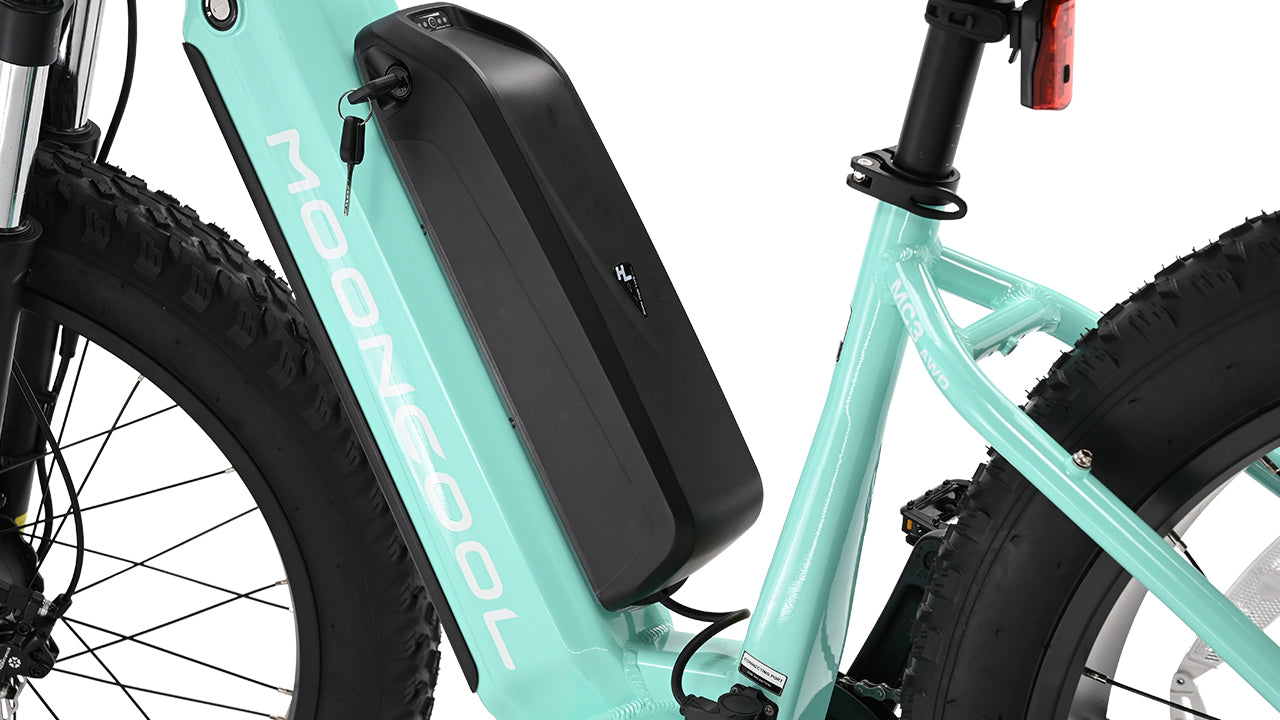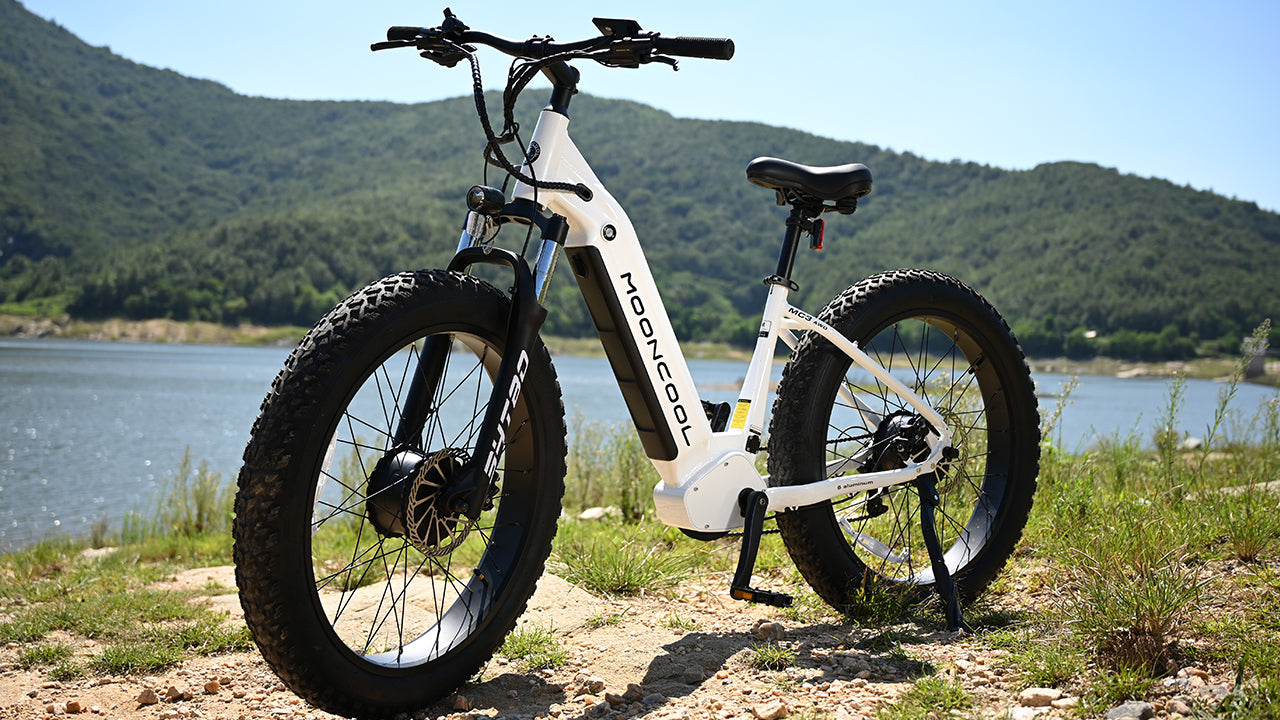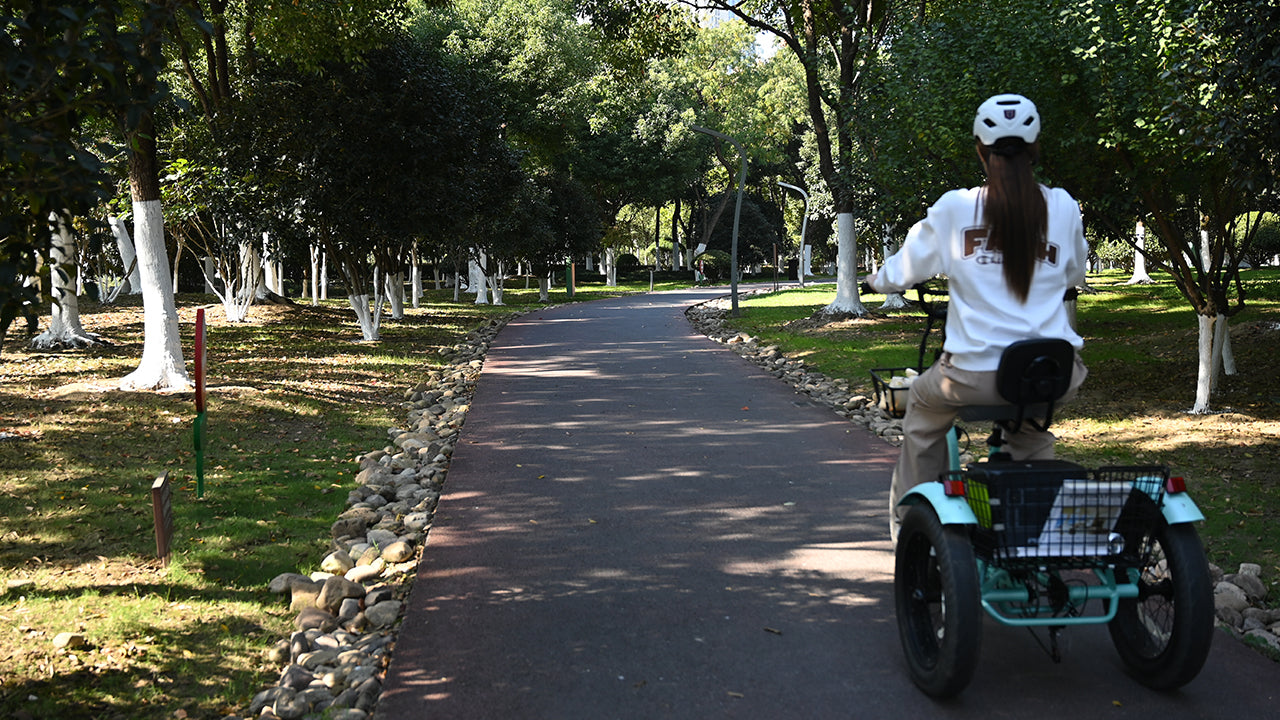Electric mountain bikes, also known as e-MTBs, are gaining popularity among thrill-seeking trail riders and mountain bikers. Unlike traditional pedal bikes, e-MTBs provide electric assistance to help propel you up hills and extend your rides. With the rising popularity of e-MTBs, more models and options are available from top brands. But when shopping for your e-bike, one of the most important considerations is the battery. The battery largely determines the e-MTB's range, power, and performance on trails. By understanding key factors about e-MTB batteries, you can choose the right battery and e-bike for your riding needs and budget.
1. The Main E-MTB Battery Types
When looking at e-MTB batteries, you'll encounter several main types of battery chemistry. The most common lithium-ion (Li-ion) batteries have largely replaced outdated lead-acid and nickel-based batteries.
Get more info about Li-ion batteries: Why Lithium-ion better?
Lead-Acid Batteries
In the past, some cheaper e-bikes used heavy and low-performing lead-acid batteries. But their poor lifespan and capacity make them a poor choice today. Unless on a very tight budget, it's best to avoid lead-acid e-bike batteries.
Nickel-Based Batteries
Nickel-cadmium (NiCd) and nickel–metal hydride (NiMH) batteries offer improvements over lead-acid. But compared to lithium-ion, nickel batteries still have less capacity for their size and weight. They also have slower charging times. So, nickel batteries are now relatively uncommon on e-MTBs.
Lithium Ion Batteries
Li-ion batteries are the dominant type found on e-MTBs today. Compared to outdated lead and nickel batteries, lithium-ion offers:
- Lighter weight per capacity
- Faster charging time
- Improved lifespan of 500-1000 cycles
- Higher power and energy density
Within lithium-ion batteries, there are also several subtypes with small variations in performance. Common li-ion battery types include:
- Lithium Cobalt Oxide (LiCoO2): Offers high energy density but can be unstable. Used less frequently now.
- Lithium Manganese Oxide (LiMn2O4): Safer alternative to LiCoO2 but slightly lower capacity.
- Lithium Nickel Manganese Cobalt Oxide (LiNiMnCoO2 or NMC): Very common, balances safety and high capacity.
- Lithium Iron Phosphate (LiFePO4): Safer and more stable though lower energy density. Common in lower-cost e-MTBs.
- Lithium Nickel Cobalt Aluminum Oxide (LiNiCoAlO2 or NCA): Provides very high capacity but can be less stable. Used in some high-end e-MTBs.
For most riders, any of the lithium battery types represent a great option. Li-manganese batteries may have a slight edge for safety and environmental-friendliness. But, all the lithium types will outperform lead or nickel batteries.

2. Key E-MTB Battery Specs: Capacity and Range
Battery capacity and range are two of the most important specs to consider for an e-MTB battery.
Capacity determines how long the e-bike can provide assistance before needing a recharge. There are three main measurements:
- Watt-hours (Wh) - This measures the total energy storage in the battery. Wh provides the total battery capacity.
- Amp-hours (Ah) - This indicates how much current (in amps) the battery can provide for 1 hour before being discharged. For higher-capacity e-bike batteries, Ah is commonly used.
- Milliamp-hours (mAh) - This is like Ah, but milliamps are 1/1000 of an amp. So mAh is used for lower-capacity batteries to provide a finer rating scale. mAh is commonly used for small e-bike batteries and battery cells.
Voltage (V) affects the capacity calculations. It indicates the electric potential difference provided by the battery. In simple terms, it reflects the electrical "pressure" or force the battery can provide.
Relationships:
- Wh = V x Ah
- Wh = V x (mAh / 1000)
- Ah = Wh / V
- mAh = (Wh x 1000) / V
Example: A 48V 15Ah battery stores 720 Wh (48V * 15Ah). This high-capacity lithium battery can offer up to a 45-mile range. Dual batteries (1440 Wh) can extend range up to 80 miles.
In summary, higher battery capacity (Wh, Ah, mAh) directly translates to greater range.
But the real-world range depends on many factors:
- Rider weight - heavier riders draw more power
- Terrain - frequent hills drain batteries faster
- Level of pedal assist - higher assist uses more battery
- Tire pressure - low pressure creates more rolling resistance
- Wind and weather - headwinds reduce the range
So, while estimating the e-MTB range, be sure to consider your specific conditions. Also, focus on choosing an adequate range for your typical rides rather than overestimating needed capacity.
3. Charging Time and Performance
Recharging the battery after rides is also an important consideration. Common lithium batteries require about 6-8 hours for a full recharge from empty. Speed charging can reduce that time considerably but requires a compatible fast charger.
When choosing an e-MTB, check the following charger specifications:
- Input voltage range - The AC voltage the charger can accept, such as 110-240V to allow worldwide use.
- Output voltage - The DC voltage the charger supplies to match the battery, like 54.6V for a 54V e-bike battery.More info about output voltage: Li-Ion Ebike Battery Charge Charts
- Output current - The maximum DC current the charger can supply, for example, 2A (2000mA). A higher current charges the battery faster.
For example, a fast charger may be rated for 110-240V, 54.6V, and 2A input/output.
In summary, faster charging capabilities and higher charger output can improve e-MTB battery charging performance. These factors enable quicker, more frequent charging cycles, enhancing your electric off-road riding experience.

4. Assessing Performance Needs
In addition to capacity, the battery's voltage and maximum current/power relate to performance. Higher voltage batteries provide more torque and allow the e-bike to reach higher speeds. For example, a 48V battery can provide more acceleration and top speed versus a 36V battery of the same capacity. But they drain the battery charge faster compared to a lower voltage battery when outputting the same power.
Make sure to assess how much assistance and power you really require out on trails. If chosen well, a moderate battery voltage matched with just enough capacity can provide great performance without wasting energy or adding excess weight. While a 48V battery may drain faster, the performance gains in terms of torque and top speed are significant. For riders wanting maximum thrills on the trail, the raw power of a high-voltage 48V battery is tough to beat.
5. Care and Maintenance Tips
Once you've chosen the right e-MTB battery, proper care and maintenance will ensure you maximize its lifespan and value. Consider these battery care tips:
- Fully recharge after every ride
- Store batteries at room temperature
- Avoid exposing the battery to temperature extremes
- Charge the battery monthly during off-seasons
- Limit maximum discharge to 80% for optimal longevity
- Have dealers perform annual battery check-ups
- Expect 500-1000 charge cycles before replacement
6. Choosing the Optimal E-MTB Battery
With the rise in capable and advanced e-MTBs, choosing the right battery is essential. Consider your typical trail distance, terrain, riding style, and assist needs. This will help determine the optimal battery capacity, range, and features. Take the time to assess your needs and research battery specs before buying your e-MTB. By choosing the right battery technology and capacity, you'll enjoy endless miles of trail riding with confidence.
Q&A
Q1: Which battery is best for an e-bike?
Lithium-ion batteries are the best type of e-bike battery due to their high energy density, low weight, long lifespan, and fast charging capability. Of the li-ion options, Li-manganese offers a good balance of performance, safety, and stability.
Q2: How long does a 750Wh battery last?
A 750Wh e-bike battery will typically last for 30-70 miles depending on the terrain, assist level, rider weight, and other conditions.
Q3: How long does an e-bike battery last?
The lifespan of an e-bike battery is usually around 500-1000 full-charge cycles. Proper care and maintenance can extend the battery's life to the higher end of this range. After significant capacity loss, it's time to replace.
Q4: How far will a 48V 20Ah battery go?
A 48V 20Ah e-bike battery has 960Wh capacity (48 x 20). This size battery should last for 40-100 miles on a single charge, depending on riding conditions. The range will be on the lower end with high assist, hills, and heavy loads.
Q5: How long will a 48V 15Ah battery last?
A 48V 15Ah e-bike battery provides 720Wh capacity (48 x 15). This size battery will typically last for 30-75 miles depending on the power settings, hills, rider weight, and other usage factors.
Read More
- Never Cycled Before? Easy E-trike Guide For Seniors
- Supporting Your Child's Back to School Transition: A Parent's Guide
- Traveling With Your Electric Trike: Transport & Storage Tips
- Fat Tire E-Bikes in Winter: Master the Snow Ultimate Guide!
- Electric Mobility Scooters vs. E-Trikes for Seniors: Which is Best




Leave a Comment
This site is protected by reCAPTCHA and the Google Privacy Policy and Terms of Service apply.